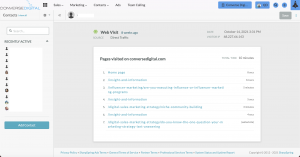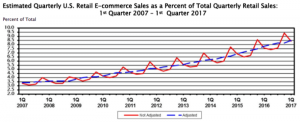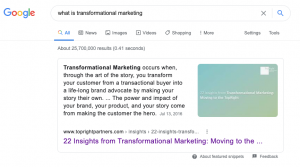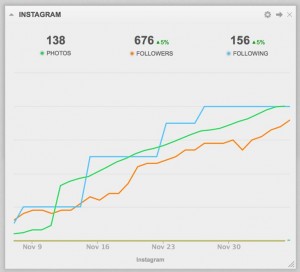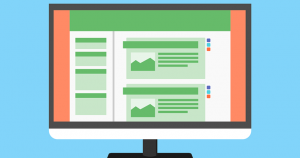Are you ready to design the best email newsletter ever?
Your email marketing newsletter design is hands-down the most important element of your campaign. Without an effective and compelling design, your recipients won’t engage and maybe will even unsubscribe or *horror* mark you as spam.
I want to help you make the most out of all your hard work and show you just how important each design step is.
Previously, I had discussed the importance of maintaining a clean and segmented email marketing list. You don’t want to waste all that work, do you?
After reading this article, or while you’re scanning away, take a moment to leave a comment with your thoughts. Your input matters, and I’m sure I’ve missed some valuable points.
———
1) Subject line
Are you happy with your subject line? Are you sure it’s going to be effective?
Your subject line is one of the most important elements of your email, if not the most important of all. It is the leading factor for whether your email gets opened or not.
When people look at your email in their inbox, what do they see that’ll compel them to click and read more? Does your subject line hook them, interest them, or build upon their curiosity?
Your subject line needs to draw their attention without giving away the gist of your email. You want them to open it and ultimately take action in one way or another.

Take the time to develop your subject line properly. Give it a lot of thought. When you do, you just might see a big difference.
Real-Life Scenario:
While with a local nonprofit, I tried to experiment with different subject line methods that I had learned about while studying marketing. It was a challenge to create something that hooked the recipient while also maintaining the strict professionalism of my employer. Once I finally had a line we could all agree upon, I sent out a series of emails without making almost any changes to it. The open rate and attendee participation suffered as a result.
While your follow-up email subject lines should be similar to your first one, it could be of benefit to try mixing it up a bit. You can add “Reminder” or something of the sort to connect the two emails, but I recommend using different wording for each email subject line.
When you send an email out with the subject line “Come visit us at XYZ conference in XYZ” (for example), be creative when sending out the next email. Catch the recipients’ attention over again with a reminder subject line that is just as compelling as the first email.
Resources:
Crazy Egg has an article titled: 12 Tips to Boost Email Click-Through Rates plus 23 Strategic Subject Lines. In addition to providing proven strategies for getting people to open your email and act on your content, Crazy Egg gives you examples of some of the most effective subject lines out there.
Impact Branding & Design published an article on subject lines titled: 6 Easy Subject Line Hacks to Boost Your Email Open Rates Right Now. It is filled with great advice to help increase your open rates and decrease your chances of getting marked as spam.
2) Preheader
This part of an email marketing newsletter design is largely overlooked. It’s the subtext that appears at the very top of your email. It’s also the short snippet of text that appears next to your email’s subject line.

Take advantage of this valuable real estate by making your preheader intriguing or informative. It’ll help improve your open rates where your subject line may have failed to do so.
Real-Life Scenario:
While I’ve been writing this article, I’ve gone through my own inbox to see what shows up in the preheader for some of the subscription emails I have there. I use Gmail, and here are some good and not-so-good examples of some preheaders I’ve found (subject line – preheader):
Subject line – subject line repeated
Subject line – read in browser link
Subject line – social media CTAs
Subject line – “Here are a few articles we thought you’d enjoy”
Subject line – “Your weekly roundup of the latest posts…”
And so on…
I definitely prefer preheaders that say something that’ll further compel me to click on the email. I don’t feel compelled to click when I see the first 3 preheader examples from above, especially #3.
In those cases, what’s in it for me? How is a repeat subject line making good use of this valuable space? How are your social media ads going to encourage me to open your email? If anything, it could end up hurting you in the end.
If I see preheaders used for self-promotion, you’d better have an incredibly convincing subject line.
Resources:
In an article I found from the Salesforce blog, the writer explained what a preheader is and why it’s so important. Although it’s a brief article, it is very informative if you’re questioning the value of preheader text.
Your preheader text is an essential part of your newsletter design, and this article tells you why.
ClickZ has a blog article titled: Eight Tips for Effective E-mail Preheaders, which goes into detail about the ways you can create preheaders that work.
One of the key points in this article is that your preheader should not be a repeat of your subject line. Unfortunately, I see 9/10 of my subscription emails taking that approach.
Take a look at this article to find 8 of the most helpful tips for effectively using the preheader space.
3) Imagery
Your newsletter should not be black and white, but it also should not be overwhelmed with color and imagery.

You need to find a balance between text and imagery in order to draw your recipient in and keep their attention.
Real-Life Scenario:
When I first started receiving email newsletters from my favorite blogs, I noticed the wide variety of techniques each blog chose for their email’s appearance.
Some of the most influential bloggers out there send me emails with snippets of their new article(s) in text only. I never read it. I simply skip all the text and go to the article link.
If I get an email with colorful imagery, I pay more attention to the purpose of the email. I read far more when the text is grouped with images because I, along with many other people, prefer to see imagery that explains the content than just text alone.
If you’re going to stick with black & white, text-only emails, don’t waste your time. Speaking from experience, email recipients don’t have time to read the heavy, visually unappealing content you send. In the end, you’re much better off taking the little extra time to add imagery, or at least color, to your email.
Resources:
Constant Contact provides an article titled: Avoid These 6 Common Mistakes When Adding Images to Your Email Marketing, which lists the mistakes you can make as well as advice on how to prevent them in future campaigns.
Number 6 in this article is my personal favorite because it’s a mistake I see a lot, and it’s a mistake I’ve made in the past myself.
Another great resource is the article by AWeber: Don’t Use Another Image In Your Emails Without Reading This First. The article includes a very good point that I haven’t talked about yet:
Your emails need imagery, yes, but even with it, you can’t neglect your text content. Imagery shouldn’t replace or overwhelm your main content. They need to work together for best results.
4) Links
Although I’ve been saying each design component is important, I pretty much have to say it every time. Each part of your design has a purpose that can’t be ignored, and links are a must-use.

You need to add links to your emails so that recipients click-through to your target location. Most importantly, you need these links to be convincing.
If you simply say “click here” or use other generic text, you’re neglecting a great opportunity for an increased click-through rate (CTR). Even worse, if you simply add the URL as your link spelled out, your email looks amateur at best.
Don’t use too many links because it’ll confuse both you and the reader as to what your real goal is. Have a focused call-to-action (CTA) in your email that stands out much more than any other links. This will increase your CTR and give you an easier time measuring the success of your campaign.
On another note, here are a few other tips for using links in your emails:
- If using a shortened URL link, take advantage of it and track it.
- Test the link to make sure it goes where it’s supposed to go.
- Give each link enough room so that recipients don’t have issues trying to select them on a mobile device.
Real-Life Scenario:
When I was working with a nonprofit, I was often in charge of their email marketing, and as a result, I had the experiences and opportunities to learn what works and what doesn’t with link placement, design and use.
One of the mistakes I made was not having a focused CTA. I added several links, all of which were the same size, color… And they were all grouped together in one space.
It was a mess, and I quickly learned my lesson. My next email campaign worked much better as I had added a CTA that stood out from the rest of the content and links. The space I had created for links in the past – I gave each link more space and limited the number of links I added.
Resources:
I found an article by Marketo titled: 10 Best Practices for Using Links in Emails. It goes more in depth than I have on this subject, so I recommend taking a look at what it has to offer you.
One of the points in the article really stands out to me. Your links should always be relevant to the content of your email. You don’t want to confuse or distract your recipients, so stay focused on the theme or purpose of your email.
5) Copywriting
The last part of your design that I discuss is the way in which you add and finalize your copy.

When you select the text you want to use, you need to be especially concise and choosy in what you include.
People aren’t going to read huge blocks of text, so make sure you cut it up into separate sections when you can.
Stay relevant to what you want people to know and do at the end. It needs to relate to your final call-to-action.
Also, have an editor (or 2 or 3) go over your copy to check for spelling, grammar, simplicity, and accuracy. Have them give you a critique of whether they understand and can follow what you’re trying to say.
Real-Life Scenario:
When I receive newsletters in my email, I consistently choose to open almost all of them because I know I signed up to receive them for a reason. However, when I look at the opened email, I sometimes get disappointed in what I see.
I’ve seen emails that were clearly not proofread or thought-through. I’ve even seen emails that simply don’t make sense, and I have no idea what the sender wanted me to do.
The worst I’ve seen was an email that had text that didn’t even relate whatsoever to the subject line. It was clear that the sender did not check what topic s/he wanted to share.
Resources:
The writers at Writtent provided an article titled: The 11 Key Elements of Amazing Copywriting, which gives you a detailed description of what you need to have and do for successful copywriting.
Although the article is not directly focused on email marketing, it can all be used for that purpose.
Another resource to check out is from GetResponse: The “4Ps” of Persuasive Email Copywriting. It gives you a different appreciation for proper email copy by describing 4 “Ps” for effectiveness.
The article focuses on your copy from beginning to end, using persuasion as its main point.
———
Summary
There are other elements to your email marketing newsletter design, but I’ve gone into detail about the points I find most important:
- Subject line
- Preheader
- Imagery
- Links
- Copywriting
———
(119)


